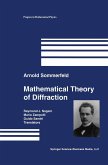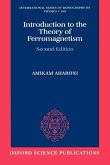The emphasis in this text is on classical electromagnetic theory and electrodynamics, that is, dynamical solutions to the Lorentz-force and Maxwell's equations. The natural appearance of the Minkowski spacetime metric in the paravector space of Clifford's geometric algebra is used to formulate a covariant treatment in special relativity that seamlessly connects spacetime concepts to the spatial vector treatments common in undergraduate texts. Baylis' geometrical interpretation, using such powerful tools as spinors and projectors, essentially allows a component-free notation and avoids the clutter of indices required in tensorial treatments. The exposition is clear and progresses systematically - from a discussion of electromagnetic units and an explanation of how the SI system can be readily converted to the Gaussian or natural Heaviside-Lorentz systems, to an introduction of geometric algebra and the paravector model of spacetime, and finally, special relativity. Other topics include Maxwell's equation(s), the Lorentz-force law, the Fresnel equations, electromagnetic waves and polarization, wave guides, radiation from accelerating charges and time-dependent currents, the Liénard-Wiechert potentials, and radiation reaction, all of which benefit from the modern relativistic approach. Numerous worked examples and exercises dispersed throughout the text help the reader understand new concepts and facilitate self-study of the material. Each chapter concludes with a set of problems, many with answers. Complete solutions are also available. An excellent feature is the integration of Maple into the text, thereby facilitating difficult calculations. To download accompanying Maple worksheets, please visit http://www.cs.uwindsor.ca/users/b/baylis
"[The book] has a nice blend of mathematical physics, fundamentals of electromagnetic theory and practical applications.... It is extremely well written and contains numerous exercises and problems to help the reader gain familiarity with new concepts. Throughout...the author emphasizes the conceptual framework of electromagnetism so that the reader does not get lost in details. Such a style is very valuable in a physics textbook.... The book simultaneously teaches the reader electromagnetic theory and more advanced mathematical concepts in a very concrete physical context.... Essentially self-contained...it will serve as an excellent textbook for graduate level physics courses on electromagnetic theory and mathematical physics. It is also a good reference book for researchers in applied mathematics, theoretical physics and electrical engineering." -Current Science








